Eight Myths About Electrification
With the national push for electrification getting stronger, an engineer shares some common misconceptions about it and why they aren't true.
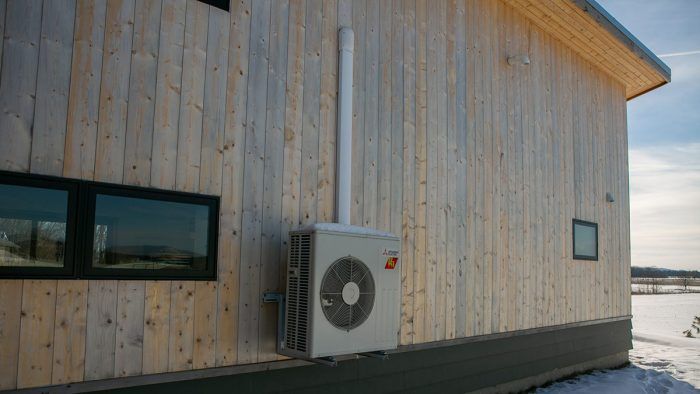
As electrification takes off, there seems to be quite a bit of misinformation flying around. I’ve seen it at conferences, in blog posts and news articles, and even from one of my favorite late-night TV hosts. This provides a great opportunity to weigh in on some of the topics and add my real-world experience. Let me tackle eight myths.
Myth 1: Electrification is expensive
The Inflation Reduction Act (IRA) will provide significant incentives—up to $14,000—to support electrification and will substantially reduce the upfront cost of conversions. It will cover appliances and supporting work such as upgrading breaker panels and rewiring. Exact program requirements aren’t expected until late 2023 or early 2024. Rewiring America has a great overview of these and other tax incentives.
The annual operating cost when using heat pumps for heating/cooling and domestic hot water (DHW) is likely to be less than when using propane or fuel oil. Costs can be competitive with natural gas depending on local rates. In cases where you’re converting from electric-resistance heating or DHW, operating costs with heat pumps will be significantly less. (Technically this is not “electrification,” but IRA incentives could still apply depending on exact program requirements.)
When building new, there’s an opportunity for further cost savings by eliminating gas piping in the building, the connection to the gas grid, and sometimes a monthly connection service charge (also a benefit for existing buildings disconnecting from the grid). Avoiding this gas infrastructure provides significant savings that can help offset incremental costs of electric equipment.
Myth 2: The grid is dirty
A frequent rebuttal to electrification goes something like this: “I am just shifting the emissions from my equipment to the power plant and maybe even making them worse if it’s coal-fired, so what’s the point?” The Rocky Mountain Institute recently updated a study analyzing these emissions impacts and found that in all states in the Lower 48, it made sense to switch immediately to heat pumps for space heating and hot water. Depending on the state, projected emissions over a 15-year period were reduced by 35% to 93%. Reductions were driven by grid decarbonization efforts along with state and federal policies such as the IRA.
We’ve passed the tipping point—the grid is clean enough now and will only continue to improve. Due to the scale of the electrification efforts, we must proceed with them in parallel with continued grid decarbonization and other improvements.
Myth 3: Gas is clean
Gas is often thought of as clean because the word “natural” has been added in front of it, but that really isn’t the case. If we consider just combustion performance, gas is an improvement over some fuels. But reviewing the life cycle, from harvesting to combustion, paints a disconcerting picture. Natural gas is a greenhouse gas; any leaks during extraction, transport, and use, or from retired wells, contribute significantly to global warming. In addition, combustion during use produces CO2 and other pollutants, which impact air quality indoors and outdoors.
Myth 4: Gas heat works when the grid goes down
Typically with natural gas a backup system is still required. Fossil-fuel-fired central heating equipment requires electricity to operate fans, circulators, controls, safety components, valves, and so on. When power is lost, these systems will not operate.
Myth 5: I need at least 200-amp service
The larger the service, the easier it is to electrify. However, a home can be electrified on a 100-amp service; it would likely require some modifications such as subpanels to provide more breaker space, load-sharing breakers, smart panels, or reduced loads from weatherization and higher-performing equipment. Redwood Energy’s Watt Diet Calculator can guide you through estimating and reducing your loads to avoid upsizing the electrical service. (For further background, visit redwoodenergy.net/watt-diet-calculator.) The IRA is providing up to $4000 for breaker-box replacement and $2500 for wiring.
When I built my home, the utility engineer told me that 200-amp service is more than sufficient for an all-electric home, barring any atypical loads. My most demanding equipment includes two one-to-one minisplits, a heat-pump water heater (HPWH), a standard electric clothes dryer, an induction range, and small kitchen appliances.
After installing a Sense monitor, I analyzed the data. My peak power use was 17.9kw. It lasted for approximately one minute and amounted to a draw of about 75 amp. According to the National Electrical Code, I could add another 5 amp and still be OK with a 100-amp panel.
Myth 6: Heat pumps don’t work in cold climates
Several heat pumps can maintain 80% of their rated capacity down to about –15°F. In general, these can completely cover heating needs in climate zones 5 and lower, most or all such needs in climate zone 6, and a substantial amount in climate zone 7. With design temperatures lower than –15°F, systems are often supplemented with electric resistance (and sometimes it’s built right into the appliance). My family is in climate zone 6A, with periodic lows below 0°F, and our minisplits have kept us warm.
The heating-season coefficient of performance (COP), a measure of efficiency, will be greater than 2.0 in the coldest climates and greater than 4.0 in milder climates. In comparison, the fossil-fuel alternatives will be 0.98 at best, regardless of climate, so the heat pump is at least two to four times as efficient.
Myth 7: Electric cooking is dangerous too
About a month ago, I was watching a Stephen Colbert monologue, and he triggered us energy nerds when joking about the gas-range-ban controversy, stating, “Kids, I don’t want you inhaling particulate matter. So I bought us something that goes from room temperature to the surface of the sun with nothing in between, and when you turn it off it stays hot for hours.” Rewiring America, among others, responded to this misinformation with a demonstration of an electric-induction cooktop.
I conducted a simple test with my own induction cooktop. It took five minutes to bring a gallon of water to a rapid boil. I removed the pot after 10 minutes of boiling, and the surface below it was 179°F. (The thermometer needed a few moments to stabilize, so it may have been hotter). I could keep my finger an inch away from the pot during the entire testing period. This is drastically cooler and safer than a traditional electric or gas range—or the surface of the sun. The proposed IRA incentives can eliminate any modest cost difference between an induction range and a standard electric-resistance range.
Myth 8: Heat-pump water heaters are complicated
There are a number of myths about HPWHs alone. Some think they require a large breaker. In reality, most 40-gal. to 80-gal. unitary HPWHs require a 30-amp, 240v circuit. Some manufacturers offer 15-amp, 120v versions. Those larger breakers are typically for higher-capacity, standard electric-resistance water heaters or instantaneous models.
There are rumors that HPWHs can’t keep up. I have a family of four, with a 50-gal. HPWH set on hybrid mode (high-demand mode), and we have yet to unexpectedly run out of hot water. Two options for promoting success include choosing larger storage volumes or increasing storage tempera-ture and then mixing down to 120°F.
HPWHs can be loud, but this is model-dependent. Limited feedback indicates that the AO Smith HPTS line may be a quieter option. The Sanden split system eliminates any noise concerns. Additionally, some sound-mitigation strategies can be implemented if the unit can’t be isolated from living areas.
Another concern is that a HPWH will freeze the room. This is an exaggeration, though it might reduce the temperature. A study by Slipstream found that the cooling impact was minor (on the order of 2ºF), at least in semi-conditioned basements. Strategies to reduce the cooling effect include programming the unit to run at night or when away at work (which is also good for avoiding noise), or ducting the exhaust to an alternative location that’s not sensitive to the cooling effect. Importantly, HPWHs should not be ducted to the exterior in cold climates. Combining one with a heat-pump dryer in a laundry room, which adds heat to the space, can provide a nice synergy and reduce the cooling effect.
Finally, while HPWHs have a higher upfront cost than their gas or standard electric counterparts, they have lower operational costs. And the IRA will provide up to $1750 for a HPWH, making it competitive with gas/standard electric versions.
Final thoughts
Electrified buildings work, and electrification is a key component to decarbonizing our energy use. The most opportune time for it is during end-of-life replacement and new builds. When we pass on electrification opportunities, we are likely committing that building to another 10 to 15 years of fossil-fuel use.
The IRA and other incentive programs can defray a substantial portion of the fuel-switching costs. Avoiding the gas infrastructure can further offset electric equipment costs. We have passed the tipping point where it makes sense to electrify, and we need to continue forward full steam ahead.
–Nate Russell is a senior energy engineer at Beyond Efficiency.
Photo by Beth Skogen
From Fine Homebuilding #320
RELATED STORIES
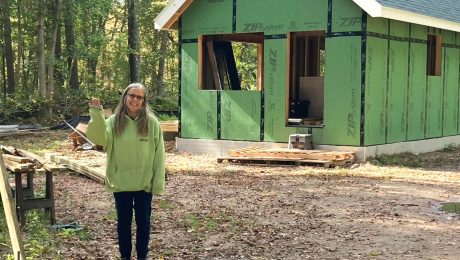


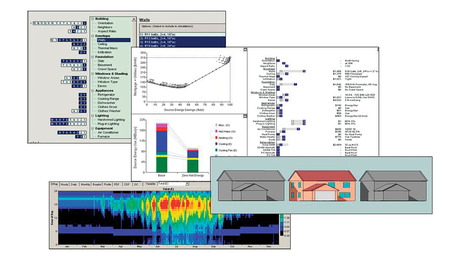










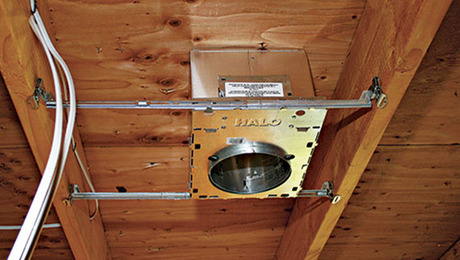
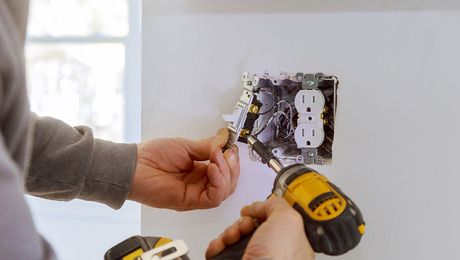
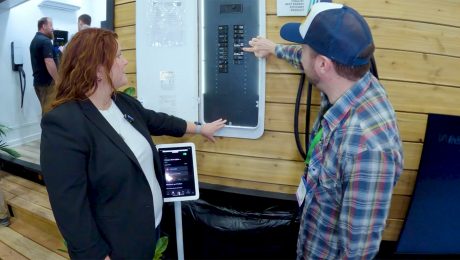













View Comments
Regarding the HWHP and cooling the space - it seems to me that it's just like how a refrigerator heats the space (kitchen), which of course affects cooling in the summer. We don't think twice about that.
Certainly something to be aware of, but it shouldn't stop us from installing these.